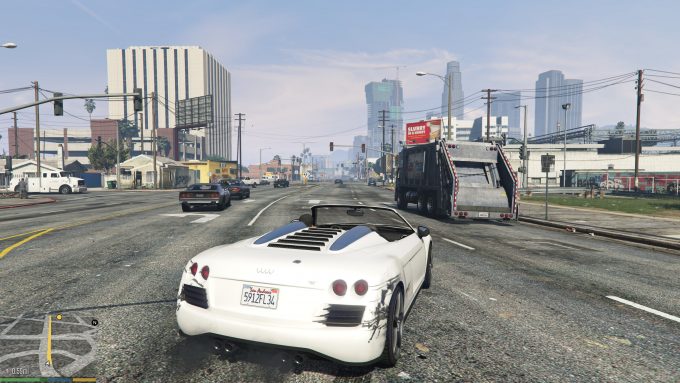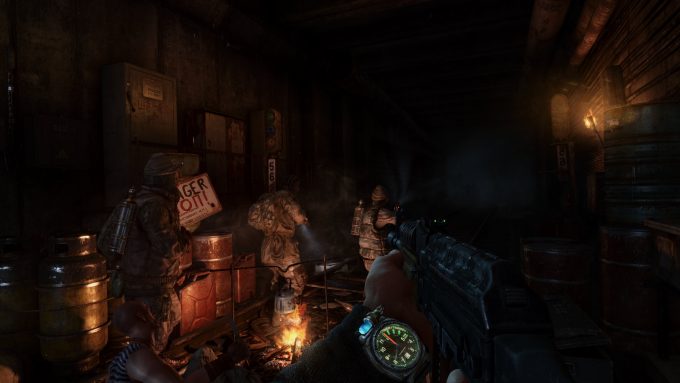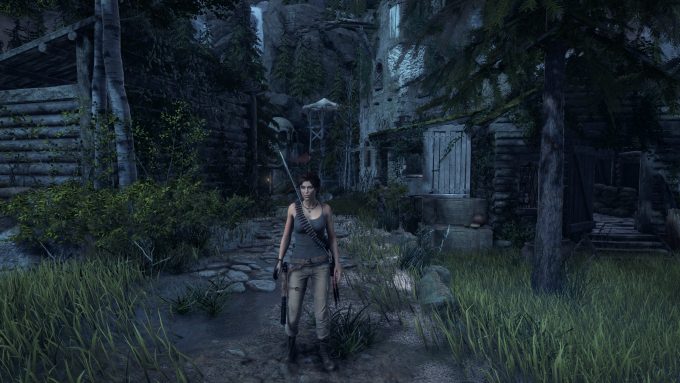- Qualcomm Launches Snapdragon 4 Gen 2 Mobile Platform
- AMD Launches Ryzen PRO 7000 Series Mobile & Desktop Platform
- Intel Launches Sleek Single-Slot Arc Pro A60 Workstation Graphics Card
- NVIDIA Announces Latest Ada Lovelace Additions: GeForce RTX 4060 Ti & RTX 4060
- Maxon Redshift With AMD Radeon GPU Rendering Support Now Available
NVIDIA GeForce GTX 1070 Review: A Look At 1440p, 4K & Ultrawide Gaming

We learned last month that NVIDIA’s latest top-end GeForce is a ‘force’ to be reckoned with, but what about its littler brother, the GTX 1070? It’s been no secret what this card essentially is : a TITAN X successor. While many successors usually perform more than 5% better, though, they don’t usually cost less than half as much at the same time. Intrigued?
Page 3 – Tests: Grand Theft Auto V, Metro Last Light & Rise Of The Tomb Raider
Grand Theft Auto V
Does a game like this even need an introduction? Any Grand Theft Auto game on the PC is a ‘console port’, proven by the fact that it always comes to the PC long after the consoles, but Rockstar has at least done PC gamers a favor here by offering them an almost overwhelming number of graphical options to fine-tune, helping to make it suitable for benchmarking, especially at high resolutions.
Testing: The mission Repossession is chosen for testing here, with the benchmark starting as soon as our character makes his way to an unsuspecting car. The benchmark ends after a not-so-leisurely drive to a parking garage, right before a cutscene kicks in.
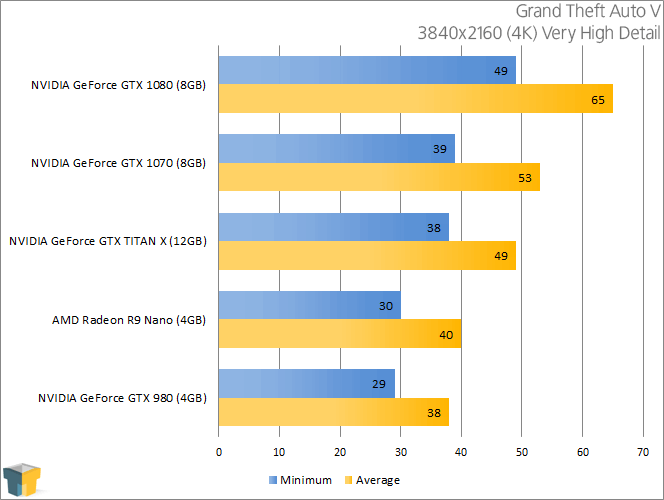
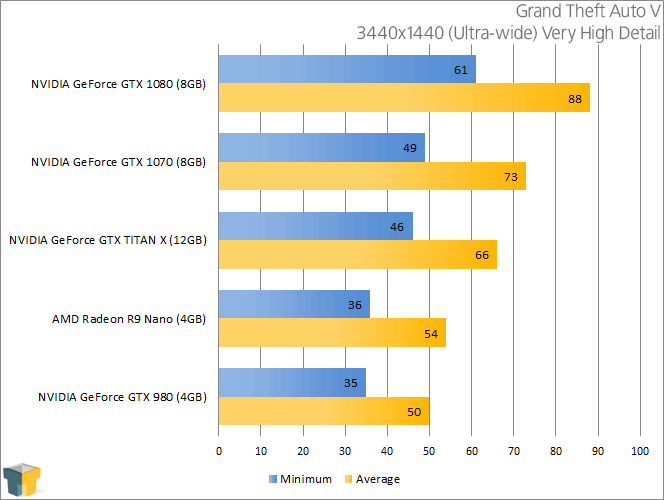
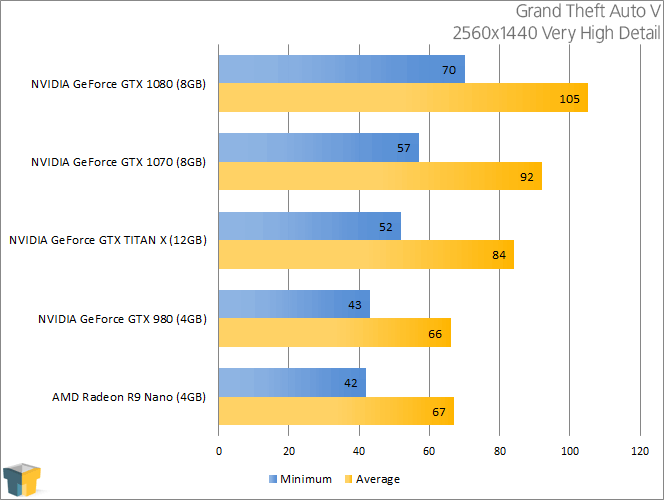
If it’s not becoming clear by now why I decided against 1080p testing, I’m not sure what to tell you. At 1440p and full detail, GTA V gets 92 FPS on the GTX 1070. It even manages to breach 70 FPS at our ultrawide resolution of 3440×1440. It also delivers good performance at 4K. It’d only require a couple of settings be toned down to increase the performance at 4K to 60 FPS.
Metro Last Light Redux
Like a couple of other games in our stable, Metro Last Light might seem like an odd choice give its age. After all, the original version of the game came out in 2013, and its Redux version came out in late 2014. None of that matters, though, as the game is about as hardcore as it can get when it comes to GPU punishment.
Testing: The game’s built-in timedemo is used for testing here, which lasts 2m 40s. While the game can spit out its own results file, it’s horribly inaccurate, so Fraps is still used here.
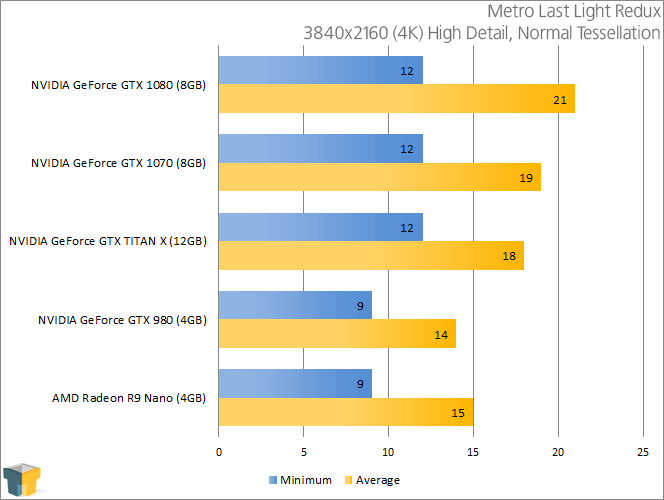
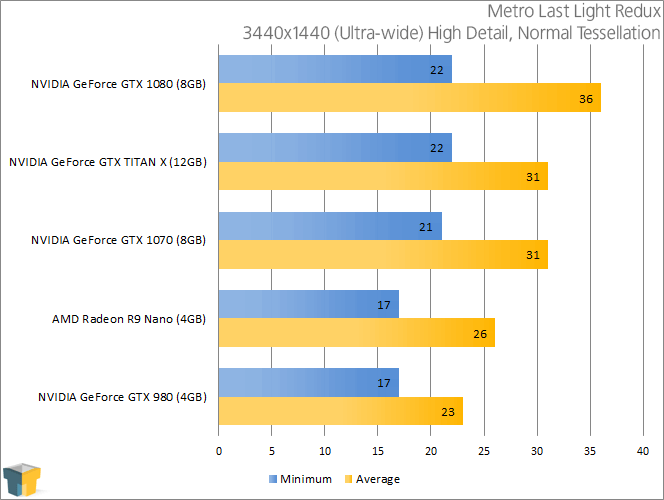
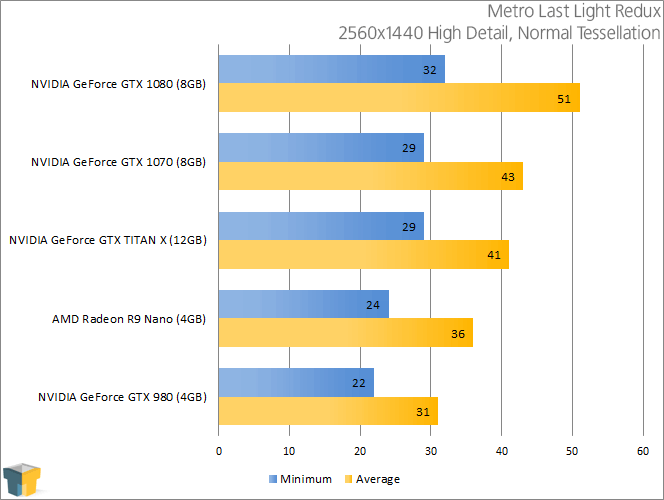
I’m going to go out on a limb and say that if a card like the GTX 1080 can only achieve 51 FPS in a game at 1440p, the graphical settings might be dialed up a bit too much. Nonetheless, I am glad we use Metro as a timedemo, because sub-20 FPS at 4K would redefine benchmarking tedium.
What we can take away from this though is that the GTX 1070 and TITAN X continue to perform at the same level. In many cases, the 1070 wins easily.
Rise Of The Tomb Raider
Lara Croft has sure come a long way. The latest Tomb Raider iteration becomes one of the first titles on the market to support DirectX 12, but even without it, the game looks phenomenal at high detail settings (as the below screenshot can attest).
Testing: Geothermal Valley is the location chosen for testing with this title, as it features a lot shadows and a ton of foliage. From the start of our saved game, we merely walk down a fixed path for just over a minute and stop the benchmark once we reach a broken down bridge (the shot below is from the benchmarked area).
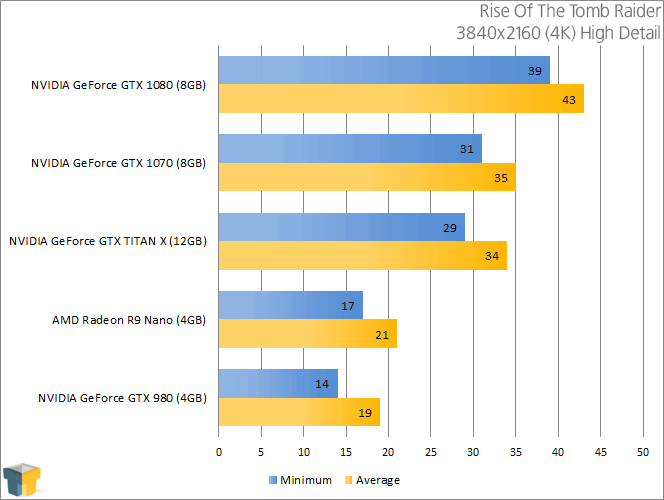
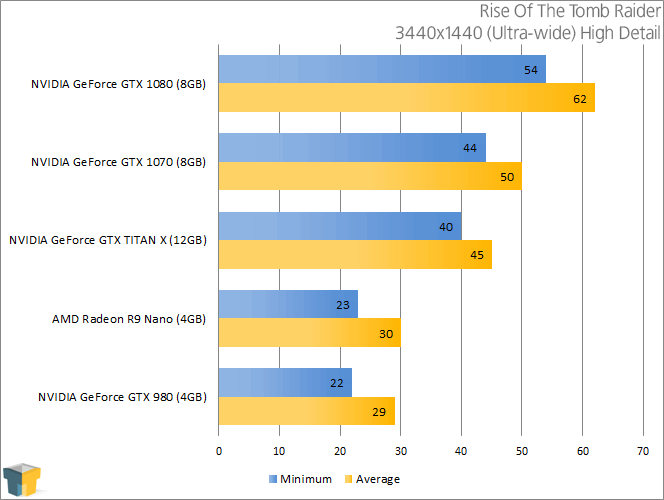
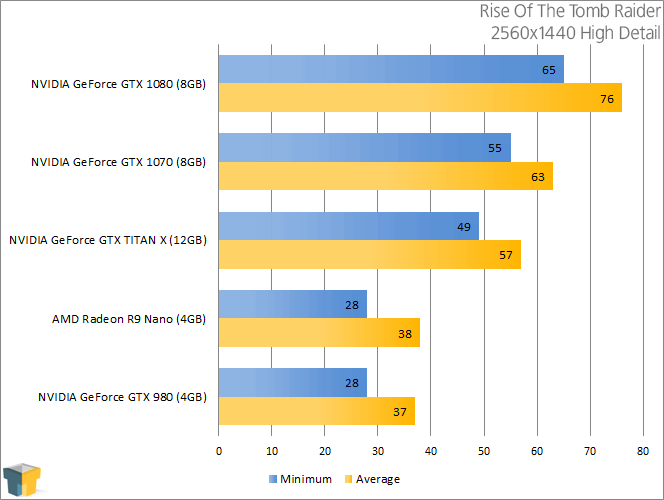
Rise of the Tomb Raider is one of the best-looking games out right now, and lo and behold: the GTX 1070 can power it at over 60 FPS at 1440p. At the top-dog ultrawide resolution, it tapers off at 50 FPS, but as mentioned with previous games, it wouldn’t take too much effort to achieve 60 FPS. 4K is much different, though: it’ll require some substantial tweaking to attain a much better framerate.
Support our efforts! With ad revenue at an all-time low for written websites, we're relying more than ever on reader support to help us continue putting so much effort into this type of content. You can support us by becoming a Patron, or by using our Amazon shopping affiliate links listed through our articles. Thanks for your support!




